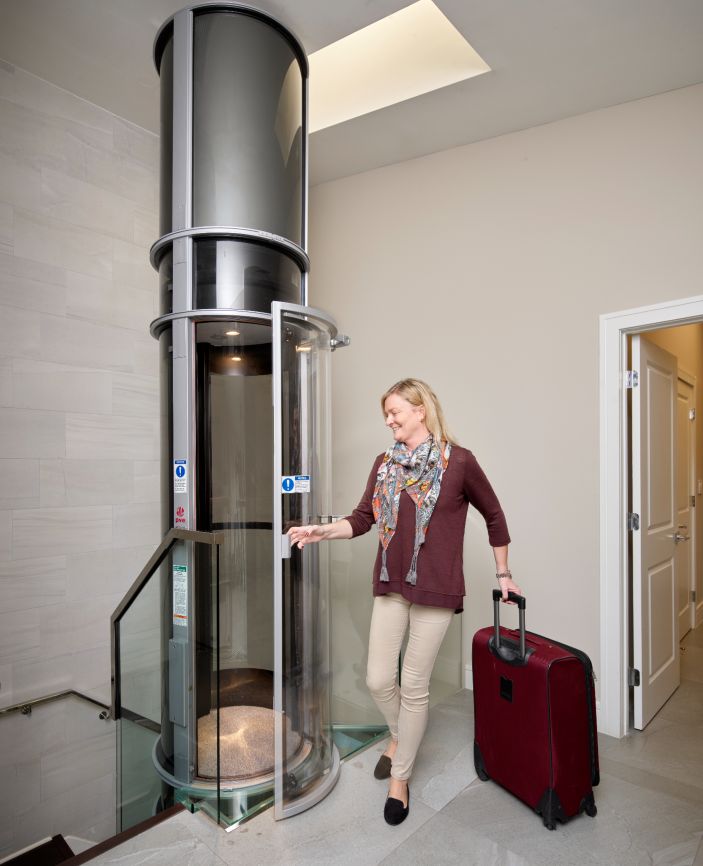Top Lift Companies in London: Offering Quality Installations and Upkeep
Top Lift Companies in London: Offering Quality Installations and Upkeep
Blog Article
Diving Into the Globe of Elevators: Typical Problems Encountered by Different Lift Systems
As we browse through the upright transport systems of modern-day buildings, elevators stand out as an indispensable component of our daily lives. From hydraulic lifts to traction systems and machine-room-less designs, each lift type comes with its collection of typical problems.
Hydraulic Elevators
Hydraulic elevators, commonly favored for low-rise structures, use fluid stress to regulate the movement of the elevator auto (lift repair companies). This mechanism involves a hydraulic pump pressing oil right into a cyndrical tube, triggering the elevator to relocate the preferred instructions. While hydraulic lifts are known for their quiet and smooth operation, they do come with their very own set of common problems
One prevalent trouble with hydraulic lifts is oil leakage. The seals in the hydraulic system can wear in time, leading to oil seepage. If left unaddressed, this not only creates a mess yet can also affect the lift's efficiency. In addition, problems with the control system, such as faulty shutoffs or a malfunctioning pump, can cause disturbances in the lift's movement.
Normal upkeep and timely repairs are important to guarantee the smooth functioning of hydraulic lifts. By addressing these typical concerns proactively, structure proprietors can decrease downtime and ensure the safety and efficiency of their upright transport system.
Grip Lifts
When taking into consideration upright transport systems in structures, one more typical kind in addition to hydraulic elevators is the traction elevator. Traction elevators operate using a system of ropes and weights that move the elevator vehicle by clutching onto the hoist ropes. This device enables smoother and faster upright transportation compared to hydraulic systems.
Among the typical issues encountered by grip elevators is rope wear. The continuous movement of the ropes within the grip system can lead to tear and use gradually, potentially causing the elevator to malfunction or come to be hazardous for usage. Routine evaluations and upkeep of the ropes are essential to make sure the elevator's proper performance and safety.
An additional problem that grip elevators might come across is associated with the control system. Troubles with the control system can bring about problems such as unpredictable motion, hold-ups in response times, or even full closures. Routine screening and maintenance of the control system are crucial to stop such issues and ensure the elevator's dependability.
Machine-Room-Less (MRL) Lifts

One of the key elements of MRL lifts is the compact gearless traction device that is mounted within the hoistway. This device effectively drives the lift cars and truck without the demand for cumbersome devices located in traditional traction lifts. In addition, MRL elevators usually utilize a weight system to balance the car, more improving their energy efficiency.
In spite of their advantages, MRL elevators may deal with obstacles associated with upkeep and repair work due to the restricted space for equipment installation. Access for servicing elements within the shaft can be limited, needing specialized training for service technicians. Appropriate maintenance timetables and regular evaluations are important to make certain the ongoing smooth procedure of MRL lifts.
Overloading and Weight Restriction Issues
Are lifts furnished to manage excess weight loads efficiently and safely? Straining and weight restriction problems are essential issues in lift operations. Lift producers design raises with specific weight abilities to ensure guest safety and security and equipment longevity. Surpassing these weight limits can bring about various problems, consisting of mechanical failings, delays, and security threats.
When elevators are overloaded, it places excessive stress on the motor, cables, and various other elements, potentially more tips here creating malfunctions or malfunctions. Security mechanisms such as sensors and overload sensors are in place to stop lifts from relocating if they discover excess weight. Furthermore, surpassing weight restrictions can bring about enhanced energy usage and deterioration on the elevator system.
To alleviate straining issues, building supervisors need to plainly display weight limits in elevators and inform passengers on the importance of adhering to these constraints - lift repair companies. Regular upkeep checks by qualified specialists can also help make certain that lifts are running within safe weight parameters. By resolving overloading and weight limitation issues proactively, structure proprietors can enhance elevator safety and performance
Electrical System Failures
Exceeding weight limits in elevators can not just lead to mechanical problems yet likewise potentially contribute to electrical system failures within the lift framework. Electric system failings are an important worry in lift operation, as they can trigger unanticipated closures, breakdowns, or even safety and security threats. One common electrical problem is the overheating of components as a result of excessive existing see here flow triggered by overwhelming the lift past its capability. This can lead to harm to the circuitry, electric motor, or control systems, leading to expensive repair work and downtime.
Regular maintenance and assessments are critical to identify and address prospective electrical issues promptly, guaranteeing the reliable and secure operation of lift systems. By adhering to weight limitations and carrying out routine electric system checks, building owners can alleviate the threat of electric failures in lifts.
Verdict

Hydraulic lifts, typically preferred for low-rise buildings, utilize fluid stress to regulate the movement of the lift car.When Get More Information considering vertical transportation systems in buildings, an additional common kind aside from hydraulic elevators is the grip lift. Traction elevators run utilizing a system of ropes and weights that move the lift vehicle by gripping onto the hoist ropes. Unlike traditional elevators that require a different maker area to house the devices, MRL elevators integrate many of the parts within the shaft, getting rid of the demand for a dedicated device room.In final thought, lifts face usual issues such as hydraulic breakdowns, traction system failings, and electric system problems.
Report this page